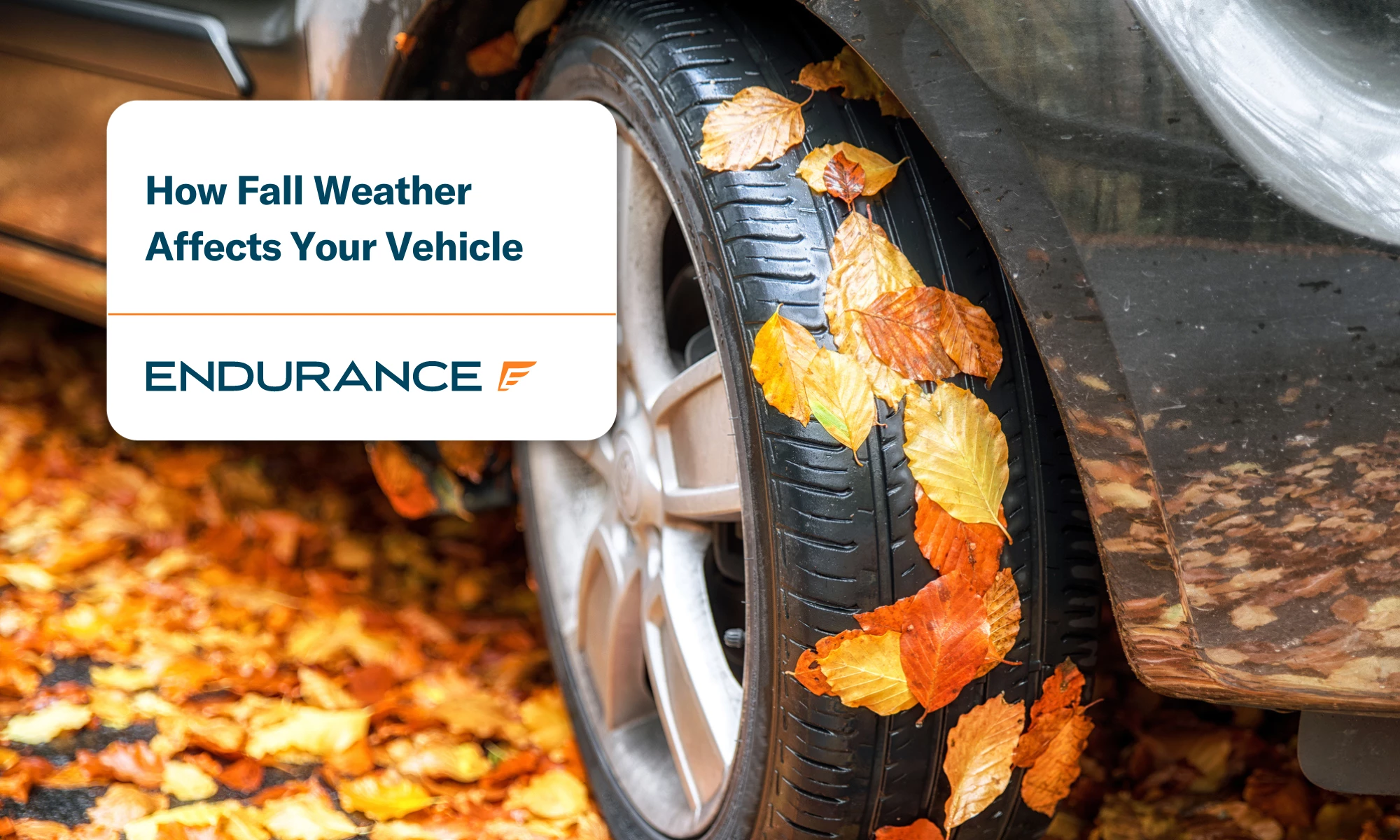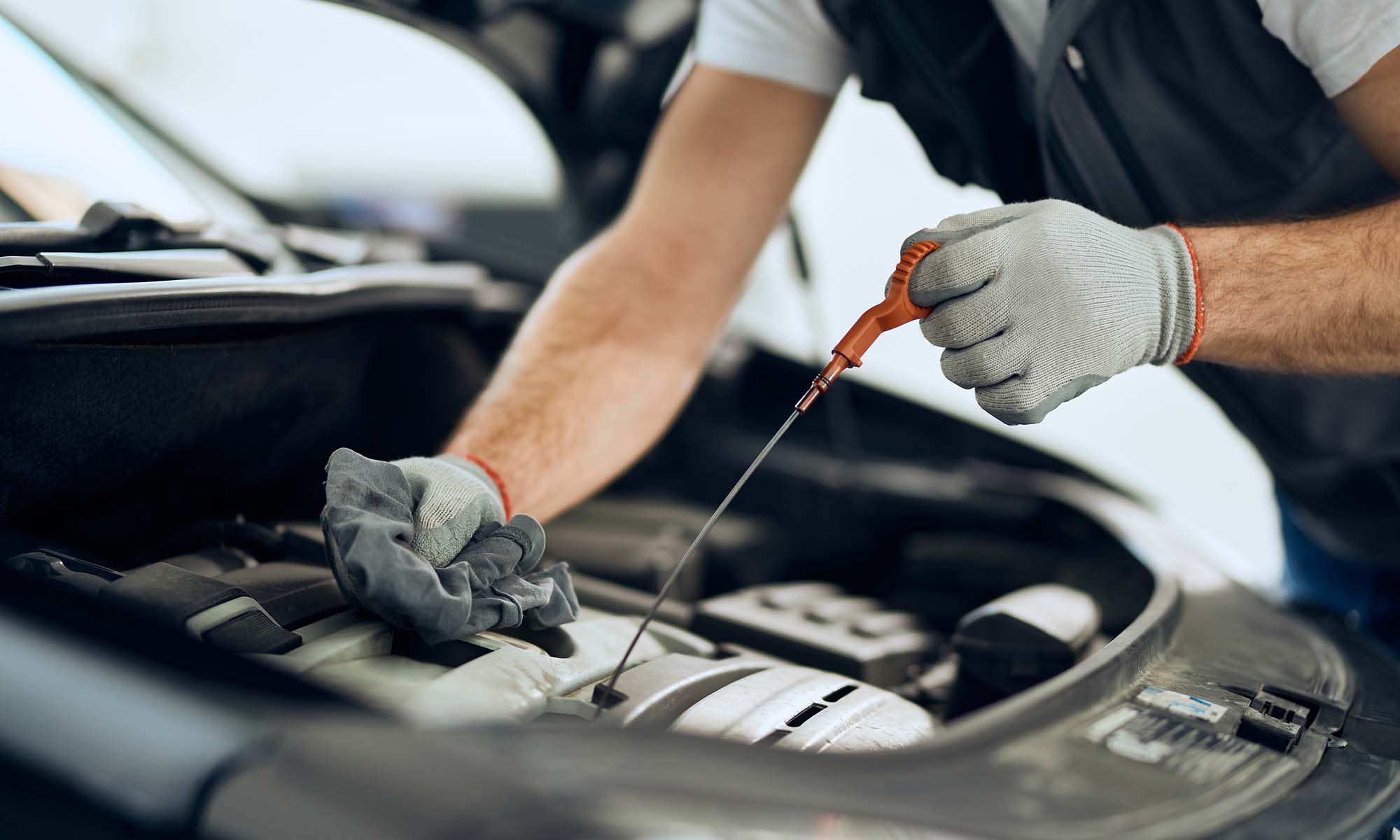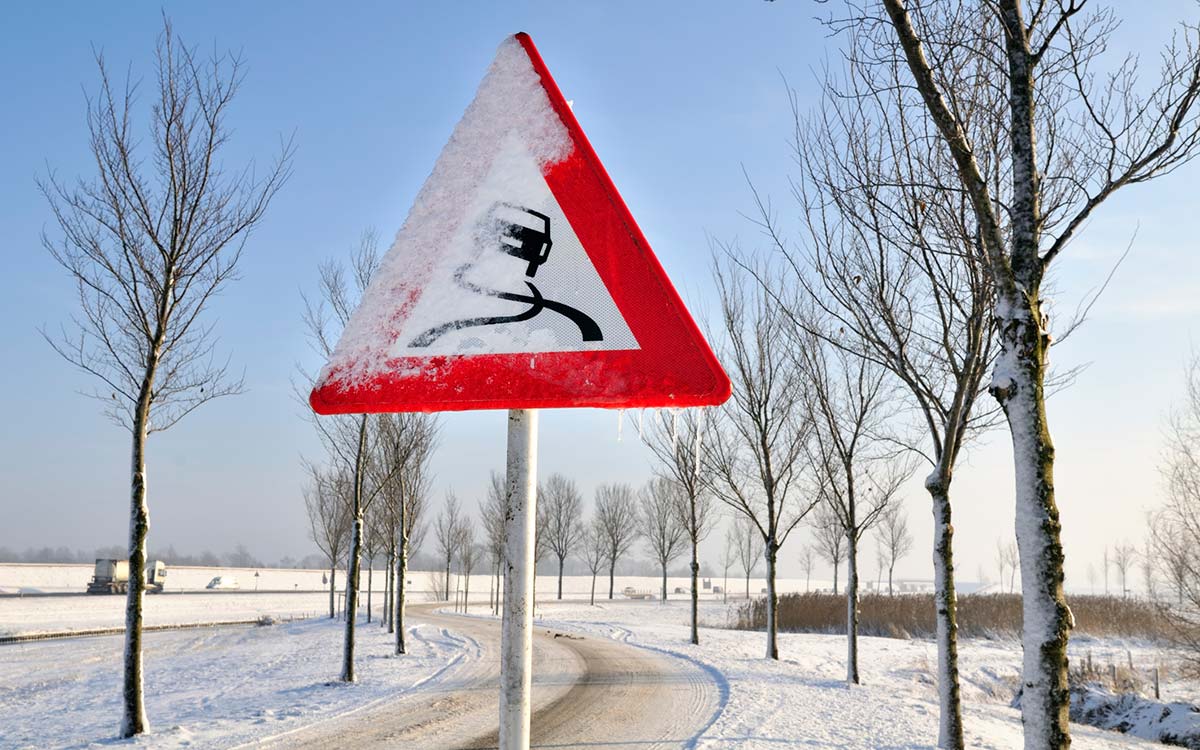Cómo afecta el clima otoñal a su vehículo

El final de una Verano abrasador significa el comienzo de otras cosas, incluido el De regreso a la escuela temporada para familias, portones traseros de fútbol, días más cortos y temperaturas más frías. Pero si bien el cambio de estaciones del verano al otoño puede cambiar sus horarios o rutinas diarias, semanales o mensuales, lo mismo sucede con su automóvil.
Después de todo, independientemente de la época del año, hay cosas para las que todo propietario de un automóvil debe estar preparado. Y en otoño, el cambio de clima con temperaturas más bajas y más lluvia, aguanieve y nieve puede afectar significativamente a cualquier vehículo y también a la conducción.
Por eso, como propietario de un automóvil, es esencial que usted y su vehículo se preparen para el clima de otoño.
Cómo el clima otoñal puede afectar a su vehículo
Si bien las personas pueden usar un suéter o una chaqueta para lidiar con las temperaturas más bajas del otoño, los automóviles no tienen tanta suerte. De hecho, el aumento de las precipitaciones y la La temperatura baja puede causar estragos en cualquier vehículo, por lo que saber cómo el clima más frío y húmedo del otoño puede afectar su automóvil puede ayudarlo a estar preparado.
1. Daños en la pintura
El exterior de un automóvil lucha constantemente con los elementos y el medio ambiente, y esto no es diferente durante el otoño. En particular, la pintura es vulnerable a rascarse de ramas sueltas de árboles que son levantadas por los fuertes vientos. Las temperaturas en descenso también suelen traer más baches u otros desechos en la carretera, que pueden ser levantados por los autos que van delante de usted en la carretera y terminar rayando o descascarando la pintura de su auto.
2. Caída de la presión de los neumáticos
Un neumático correctamente inflado ayuda a detenerse con seguridad y maximizar economía de combustible, pero la temporada Bajas temperaturas Puede dar lugar a algunos problemas potenciales como su La presión de los neumáticos disminuye. En concreto, cada 10 grados caída de temperatura provoca un 1-2 Libra por pulgada cuadrada (PSI) disminución en presión de llantaSi no tienes cuidado, podrías acabar lidiando con un problema de neumáticos inesperado. ReventarTambién es mejor recordar que también ganará entre 1 y 2 PSI por cada 10 grados de aumento de temperatura. Por lo tanto, un automóvil que puede tener la presión adecuada en un momento del día puede tener una presión más baja o más alta según si la temperatura aumenta o disminuye a medida que avanza el día.
3. Estrés en la batería
Después de un verano de temperaturas abrasadoras, su batería del coche podría verse afectado. Combinando una batería ya débil con la temperaturas frías de la caída y meses de invierno Sólo puede provocar problemas como que el coche no arranque.
4. Acumulación de óxido y corrosión.
A diferencia del verano, cuando el agua se evapora rápidamente de la carrocería y el chasis del automóvil, Condiciones climáticas Las gotas de lluvia y nieve tienden a adherirse al exterior del vehículo por más tiempo, lo que puede acelerar el proceso. corrosión o servir como el punto de partida para el óxidoLas sales para carreteras solo empeoran el problema. En lugar de eso, trate de conseguir lavados de autos regulares para ayudar a proteger la pintura y los paneles de la carrocería de su automóvil, incluso en clima invernal.
5. Los líquidos se espesan
Entre todos los líquidos utilizados en un vehículo a gas, aceite de motor, y fluido de transmisión son de los más vitales (además del combustible, por supuesto). Pero el motor y la caja de cambios tienen que trabajar más cuando el viscosidad de líquidos de soporte se espesa debido a la clima frioEsto significa que puede llevar más tiempo que un motor gire o que puede resultar más difícil cambiar de marcha. Además, es posible que los componentes de estos sistemas no reciban la lubricación adecuada.
6. Daños en el parabrisas
Lo que podría haber sido una pequeña grieta o astilla en el parabrisas Durante el verano, el frío puede convertirse rápidamente en un problema importante a medida que baja la temperatura. Y los vientos arremolinados de la nueva temporada pueden arrastrar ramas sueltas que no son buenas para los parabrisas. Además, asegúrese de no intentar nunca descongelar la ventana de su automóvil con agua caliente o hirviendo, ya que el cambio repentino de temperatura (especialmente en temperaturas bajo cero) puede acabar provocando que el parabrisas de tu coche se agriete.
Cómo preparar tu coche para el otoño
La clave para conducir en caída es tener su vehículo preparado para el clima y seguir algunos consejos simples cuidado del coche Los consejos pueden ayudar:
Rotar los neumáticos
Adecuado mantenimiento de neumáticos Ayuda a prolongar la vida útil de la banda de rodadura, a ahorrar combustible y a mantener la seguridad. Y si no recuerda la última vez que rotó los neumáticos, es probable que sea hora de hacerlo nuevamente, incluidos los neumáticos de invierno que pueda tener. Asegúrese de que este servicio incluya una inspección visual de la banda de rodadura del neumático y la verificación de si se trata de Neumáticos inflados en exceso o en defecto.
Cambiar el aceite

Cambio aceite de motor es tan emocionante como limpiarse los dientes. Pero, si bien ambas actividades no están en el tope de la “lista de cosas por hacer” de nadie en un día determinado, ambas son importantes, ya que ayudan a prevenir problemas más adelante. el manual del propietario y registros de mantenimiento para ver si su automóvil necesita un cambio de aceite y filtro.
Compruebe los líquidos esenciales
El aceite de motor y el que se pone en el tanque de gasolina del automóvil no son los únicos líquidos esenciales que necesita un automóvil. De hecho, la mayoría de los vehículos modernos deben asegurarse de tener los niveles adecuados de líquido de frenos. fluido de transmisión, líquido de dirección asistida, e incluso líquido limpiaparabrisas, entre otros. El motor de tu coche también necesita estar funcionando a la temperatura óptima de funcionamiento, por lo que revisar tu niveles de refrigerante También es vital, ya que los vehículos pueden sobrecalentarse, incluso durante las gélidas temperaturas de los meses más fríos del año. Aún mejor, la mayoría de los refrigerantes se crean con una mezcla de agua y anticongelante, por lo que podrá proteger doblemente el motor de su automóvil independientemente de cómo el clima frío le afecte a usted o al resto de su vehículo.
Inspeccione los frenos
El otoño suele traer lluvia y, a veces, incluso nieve. Cuando te enfrentas a carreteras resbaladizas o heladas, necesitarás una gran potencia de frenado, así que aprovecha la transición entre estaciones para asegurarte de que Los frenos de tu coche están en buena forma
Prepare un botiquín de emergencia
Si aún no tienes uno, ahora es el momento de armarlo. Un botiquín de emergencia para su coche, en concreto, uno adaptado a la temporada. Como mínimo, debería tener luces intermitentes de emergencia, cables de arranque, una linterna, un extintor de incendios y un botiquín de primeros auxilios. Otros elementos útiles incluyen un rascador de hielo, un cargador de teléfono móvil o una batería externa, guantes, una pala, cinta adhesiva, barritas energéticas, un poncho de lluvia, ropa de repuesto (incluido un jersey y una chaqueta de invierno) y agua potable. Las mantas de emergencia "espaciales" también son útiles, especialmente cuando se vive en una zona con un clima otoñal e invernal extremadamente frío.
Reemplazar los limpiaparabrisas
El calor del verano tiene una forma de corroer los componentes de goma del automóvil, como las escobillas del limpiaparabrisas. Por lo tanto, asegúrese de conducir de manera más segura reemplazando escobillas limpiaparabrisas desgastadas o incluso instalar un nuevo conjunto de escobillas limpiaparabrisas de invierno para ayudarle a estar más preparado para el hielo y la nieve más adelante en la temporada.
Inspeccione las luces
En otoño, la oscuridad llega antes y dura más, por lo que tener luces que funcionen (por dentro y por fuera) es un elemento fundamental para la seguridad del conductor. Tómese unos minutos para encender las luces. faros delanteros y las luces de giro mientras caminas alrededor del auto para confirmar que estén funcionando correctamente. Al mismo tiempo, pídele a un amigo que se asegure de que las luces de freno estén funcionando. Además, revisa que las luces de freno estén encendidas. luces del tablero están operativos.
Compruebe la batería
Tenga en cuenta que la mayoría baterias de coche últimos tres a cinco años. En consecuencia, tenga en cuenta su de carro batería Probado Si es tan viejo o si arrancar el auto demora más de lo normal, Maninsideores lo revisará de forma gratuita o le pedirá a su mecánico que lo haga como parte del mantenimiento de rutina.
Inspeccione el sistema de calefacción
Las temperaturas más bajas en el exterior hacen que el sistema de calefacción del interior del vehículo se mantenga cómodo. Pero no espere a la primera noche fría para descubrir que su vehículo está lidiando con un problema de temperatura. Problema de control climáticoEn lugar de eso, prueba el sistema de calefacción de tu coche simplemente encendiendo el vehículo y aumentando la temperatura. Sabrás que está todo bien si el interior se calienta después de unos minutos y, si no es así, es hora de llevar el vehículo a que lo pongan a punto.
Invierta en una garantía extendida
A pesar de todos tus esfuerzos, a veces no es posible evitar una avería. Cuando esto sucede, un garantía extendida, mejor conocido como contrato de servicio de vehiculo Cuando lo proporciona alguien que no es el fabricante de su automóvil, puede marcar la diferencia, especialmente si posee un automóvil usado y más antiguo.
Por ejemplo, con la premiada cobertura de un Plan de protección EndurancePuede obtener una protección integral contra averías para los componentes más vitales de su automóvil. Plan de protección de vehículos Advantage Incluso puede proteger su vehículo mientras ahorra $1,500 en sus necesidades de mantenimiento anual, incluidas rotaciones de neumáticos, cambios de aceite, exámenes de diagnóstico del motor y más. Además, podrá llevar su automóvil a cualquier taller de reparación de automóviles certificado o mecánico mientras disfruta también de beneficios estándar como asistencia en carretera las 24 horas, los 7 días de la semana, reembolsos de alquiler de coches, y cobertura de interrupción de viaje.
Nuestros 5 mejores consejos para conducir en otoño
Si bien preparar su automóvil para los meses de otoño es esencial como propietario de un vehículo, prepararse para las condiciones de conducción cambiantes que trae la temporada es igualmente importante.
1. Prepárese para conducir en la oscuridad
Junto con las temperaturas más bajas y otras condiciones meteorológicas, el otoño también trae consigo días más cortos, lo que puede cambiar drásticamente las condiciones de conducción a las que puede haber estado acostumbrado durante los meses de primavera y verano. Por ello, asegúrese de tener en cuenta que la puesta de sol se produce cada vez más temprano y de comprobar que todas las luces de su coche funcionan.
2. Esté atento a la vida silvestre y a los peatones
La primavera y el verano no son las únicas épocas en las que las personas y los animales están activos. A principios del otoño, los peatones y los ciclistas todavía pueden estar en la calle antes de que llegue el gélido clima invernal. Asimismo, algunas especies (como los ciervos) se aparean en otoño, mientras que otras se preparan para el invierno. Todo este ajetreo puede dar lugar a encuentros inesperados en la carretera, especialmente en las zonas suburbanas y rurales.
3. Esté alerta ante rutas obstruidas
Las ramas de árboles caídas y los baches recientes no son nada inusual en otoño e invierno, así que esté muy atento a estas y otras sorpresas en la carretera.
4. Practique una conducción segura en la niebla
El otoño es una época en la que suele haber niebla, pero conducir en condiciones de niebla exige estar atento y recordar mantener una distancia de seguridad. Además, utilice las luces bajas y los faros antiniebla (si su coche está equipado con ellos) para evitar situaciones potencialmente peligrosas para usted o para otros conductores.
5. Tenga cuidado con las carreteras resbaladizas

La lluvia y las hojas caídas son la receta perfecta para que las superficies de las carreteras queden resbaladizas, y el hielo y la nieve solo empeoran las cosas, así que adapte constantemente su conducción para adaptarse a las condiciones desfavorables de la carretera que pueda enfrentar. En otras palabras, manténgase alerta y reduzca la velocidad.
Prepárese para el otoño y más allá con Endurance
Ya sea otoño, invierno, primavera o verano, tener la protección que su vehículo necesita contra reparaciones inesperadas y costosas es vital para cualquier propietario de un automóvil, especialmente para aquellos que tienen vehículos usados y más viejos que ya no tienen la cobertura de la garantía de fábrica. Es por eso que una garantía extendida para el automóvil o Plan de protección del vehículo de Endurance es la mejor manera de ayudarte a conducir con confianza, sin importar la época del año. Los planes varían desde una cobertura básica del tren motriz hasta una cobertura similar a la de fábrica, o puedes personalizar tu propia cobertura. Puedes estar seguro de que hay un plan para casi todas las necesidades y presupuestos.
Cada plan Endurance te permite Lleva tu coche a cualquier mecánico certificado o el taller de reparación de su elección. También incluye ventajas estándar como Asistencia en carretera 24 horas al día, 7 días a la semana, reembolsos por alquiler de vehículos e incluso cobertura por interrupción de viaje. Incluso podrá acceder a más ventajas y ahorros con un año completo de cobertura. Beneficios de Endurance Élite, incluidos reemplazos de llaveros, protección contra pérdida total y más, independientemente del plan que tenga
Para obtener más información sobre Cómo Endurance puede ayudarte, llame a un asesor de planes en (800) 253-8203 o Solicite una cotización GRATISNo olvides visitar el Blog Endurance para obtener aún más artículos sobre temas como guías de compra de expertos, consejos de mantenimiento de bricolaje y más.













Como veterano del ejército y propietario de un taller de reparación certificado por ASE, Andrew ha hecho de la educación del conductor moderno una misión constante desde la apertura de su taller de reparación. Autospa de la ciudad del medio oeste, en 2012. Leer más Acerca de Andrew.